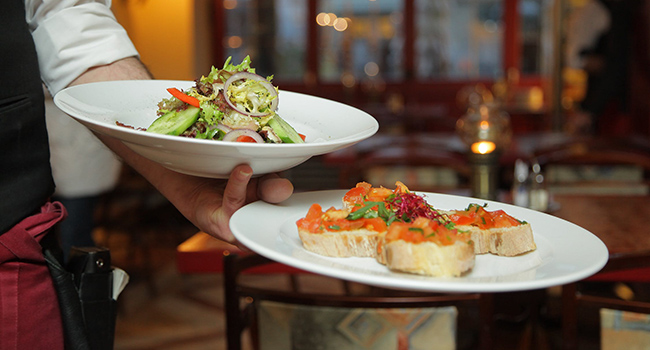 In North America, the tipping culture has always been a source of pride, giving customers the last word when human interaction is involved. Good service deserves a good tip, while an unsatisfactory experience results in no reward for the server.
In North America, the tipping culture has always been a source of pride, giving customers the last word when human interaction is involved. Good service deserves a good tip, while an unsatisfactory experience results in no reward for the server.
In some European and Asian countries, the tip is included in the price at the restaurant. Not here.
But defining what good service looks like is purely subjective. Most importantly, some in the food industry see tipping as a lever for discrimination against certain employees.
A Toronto-based restaurant recently stopped accepting tips in a move the owner says is an effort to pay staff more equitably.
Richmond Station, a restaurant on Yonge and Richmond streets in downtown Toronto, has moved to what it calls an inclusive compensation model. That means all tips for staff are included in the price. Prices on the menu have been adjusted for an average tip of 18 per cent.
Embedding tips can solve some problems. First, tipping clearly contributes to the disparity in pay in restaurants, so waiters often earn double what cooks earn. Hiring back-of-house staff has been problematic for many restaurateurs.
Studies show that tipping promotes age, race and gender bias, and that tips make servers more vulnerable to sexual harassment from customers. This is the dark side of tipping that customers often don’t see.
The concept of subjective tipping has always been a little odd. No other profession would accept that strangers can determine the salary of employees. Methods to evaluate performance will vary from customer to customer. What’s incredibly subjective can also be biased and inequitable. It’s human nature.
This is certainly not the first time a restaurateur has tried to eliminate tipping. In the U.S. and Canada, some restaurateurs have run experiments. A 2017 study found that the quality of service declined by eliminating tips directly from customers. Another study in 2018 concluded that the restaurateur’s revenues decreased as prices on the menu increased. Most abandoned the initiative as it made their operations less competitive. Most of these projects were failures and the markets weren’t ready for it.
But COVID-19 has changed many things.
First, since the reopening of restaurants in June and July across the country, many have noticed that restaurant prices haven’t decreased. On the contrary, prices have increased, mainly because food is more expensive. But prices also are set to make operations profitable despite new public health standards and physical distance measures. Most would hardly notice if tips were suddenly included in menu prices.
Second, since the beginning of COVID-19, the desire to offer a decent wage to employees who constantly interact with customers during a pandemic is palpable. The current situation has made us realize that many of these positions are filled by people who earn quite little. They take risks, several times a day.
The people who hold these positions are often women and/or minorities, who are often discriminated against – another important challenge communities currently face.
Ending tipping won’t be easy. Tipping grants power to customers and many of us are addicted to it.
However, with decades of high staff turnover, ongoing staff shortages, stories of harassment and questionable employment practices, the hospitality industry has shown that it can’t follow standards that make the sector an attractive option for job seekers.
A recent Canada-wide survey conducted by Dalhousie University suggests that most Canadians (56 per cent of respondents) now favour including tips in menu prices. That represents a surprising change. For years, Canadians felt differently.
If the sector wants to value its employees and become a decent option for people who want to work, a conversation about the future of tipping is long overdue.
Dr. Sylvain Charlebois is senior director of the agri-food analytics lab and a professor in food distribution and policy at Dalhousie University.
Sylvain is a Troy Media Thought Leader. Why aren’t you?
The views, opinions and positions expressed by columnists and contributors are the author’s alone. They do not inherently or expressly reflect the views, opinions and/or positions of our publication.



As a long time and long ago server, surely it is the connection between the server and the bill payer that determines the amount of tip. I tried my hardest to please my customers, I did not “bow and scrape” but tried to have the customer leave happy. It sometimes led to a friendly respect for a poor tipper, but if it was a regular customer we always were pleasant and friendly. Attempts to share the tips with others have existed for years and the owner’s attempt to take a percentage for distribution to back end staff are not welcome. I gave portions to others that did not receive tips as I felt needed and appropriate. The most important point being that the tip should not be mandatory, it should be a willing amount to say “Thank You”. I guess that is the North American view, not the European one.